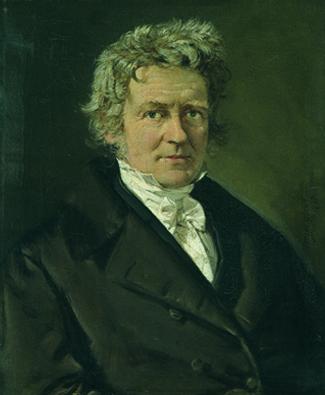Bessel, Friedrich Wilhelm (1784–1846)

Portrait of Bessel by the Danish portrait painter Christian Albrecht Jensen.
Friedrich Bessel was a German astronomer and mathematician, assistant to Johann Schröter at Lilienthal, who became director of the new Königsberg Observatory in 1810. Bessel was a superb observer and made many important contributions to positional astronomy, including, in 1838, the first direct measurement of a star's distance, that of 61 Cygni, by trigonometric parallax. He also deduced the existence of unseen companions (now known to be white dwarfs) of Sirius and Procyon (1844). Earlier, he published Fundamenta Astronomiae (1818), a fundamental catalogue of 3,000 stars. Following this, he began a major program of measuring star positions and proper motions, and by 1833 had accurate data on 50,000 stars. These he combined with previous observations into a catalogue of 63,000 stars, which provided the base for modern astrometry.
Much of Bessel's work dealt with perturbations (wobbles) in the motion of planets and stars caused by the gravitational influence of other bodies. To help analyze these perturbations he developed certain mathematical functions that are now known as Bessel functions and are used widely in physics.
Bessel argued against the existence of life on the Moon at a time when several notable compatriots of his, including Gauss, Gruithuisen, Littrow, and Olbers, were in the pro-selenite camp. In particular, he noted the sharpness with which stars are occulted by the Moon, indicating the absence of a lunar atmosphere. In a lecture, delivered in 1838, he took the supporters of pluralism to task for ignoring the astronomical evidence that our neighboring worlds (with the possible exception of Mars) are not suited to life as we know it:
The moon is decisively different from the earth in the primary point of an atmosphere; the sun is of an entirely different nature; for Mercury and Venus we have found no basis for assuming a similarity; Mars appears to possess an atmosphere and summer and winter, even snow and ice; ... Jupiter and Saturn are very dissimilar to the earth in the matter of which they consist ...


